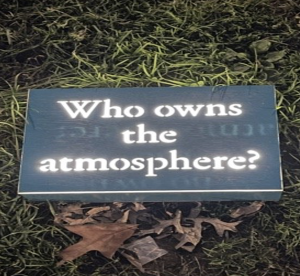“It is hard to follow one great vision in this world of darkness and of many changing shadows. Among them men get lost.”
—Black Elk

In my last post I wrote about what the sandpiper knows, the tiny bird that moves predictably with the unpredictable. No two waves are ever the same, yet the sandpiper scampers up and down them all with the intuition of a billion sunrises.
Well, here’s the end of that story . . .
The gravitational pull of the sun and the moon push and pull the ocean, combining with the winds of the planet to create waves both big and small. Those waves find a shore. On that shore there is a sandpiper whose movements are ultimately determined by those waves. So one could say, among other causations, that the sun and the moon each move the sandpiper.
On that same day, on that same beach, where those same waves met the shore, I inadvertently walked too close to that same sandpiper. And guess what? I, too, made him move.
This little tale of Kevin, the sun, and the moon moving the same sandpiper on the same day is the essence of seeing the oneness that surrounds, includes, and defines us all. This understanding begins with the recognition that I am attached, connected, and related to all the world. Like the sun, you also have the power to move sandpipers.
***
On that same beach, during that same day, I saw flags—American flags. Yet had I been on a similar beach 400 miles south, I would have seen Cuban flags. Had I then continued south another 200 miles, the flags would have been Jamaican, or 1,000 miles west, Mexican.
Regional flags are important, but they only tell half of the human story. Each of us is different, yet all of us are the same. We need flags that honor diversity, local tradition, and heritage, but we also need flags that advance unity and our shared–single planet society.
I have long maintained that division is the biggest business in the world. On a global scale nationalism is so institutionalized (by design, from birth) that we rarely give all those flags a second thought. Around the world there are 200 national flags (the exact number is always in flux, and it depends on who’s counting). For example, China doesn’t recognize Taiwan, but the people of Taiwan sure do.
Why so many flags?
It’s because when our species started out on foot, planet Earth was an unfathomably big place. When Columbus set sail in August of 1492, Europeans didn’t know that the Americas existed. As late as the 1860s, when Black Elk was a child, he had never seen a white person.
As knowledge, communication, and travel technology continue to advance, the distance between us shrinks. Yet today, even as our connectivity grows exponentially, we still rely on the old flags of distance and division to guide us.
Only 4 percent of humans are American. How does “America First” sound to the other 96 percent? Similarly, 82 percent of all people are not Chinese. How does the Chinese Communist Party’s mission of hegemony sound to the rest of the world?
So, when do we start flying a flag for all of us? Where’s our windblown symbol of oneness?
It turns out it’s here—just waiting to be used.

The International Flag of Planet Earth Organization (www.flagofplanetearth.com) exists for the simple yet transformative purpose of offering a single planetary flag that represents everyone.
“Symbols can create a powerful shift of perspective,” reads the organization’s website. “This flag is a symbol for Earth and an important reminder that we share this planet—with all of its challenges and possibilities.”
Symbols of regional heritage are healthy and important. I am proud of both the Maine state flag and the American flag. But if all the flags on Earth are regional and none are global, we’re going to continue to struggle with issues that require all of humanity to align and cooperate.
In Boston Commons recently a series of glowing signs were placed in the grass beside the walkway that runs east toward Faneuil Hall, not far from the ice-skating rink.
 The innocuous markers posed a series of questions, such as Who owns the atmosphere? Each question was boundary-less and transcended national borders.
The innocuous markers posed a series of questions, such as Who owns the atmosphere? Each question was boundary-less and transcended national borders.
Many of our biggest challenges and opportunities are global. They require the attention of all humans. So, the question now becomes, how do we get organized to act planetarily? Viewed from space, all humans carry the same flag.
Thank you for considering my thoughts. In return I honor yours.
Every voice matters. Nestled between our differences lies our future.
www.thebusinessofsharedleadership.com